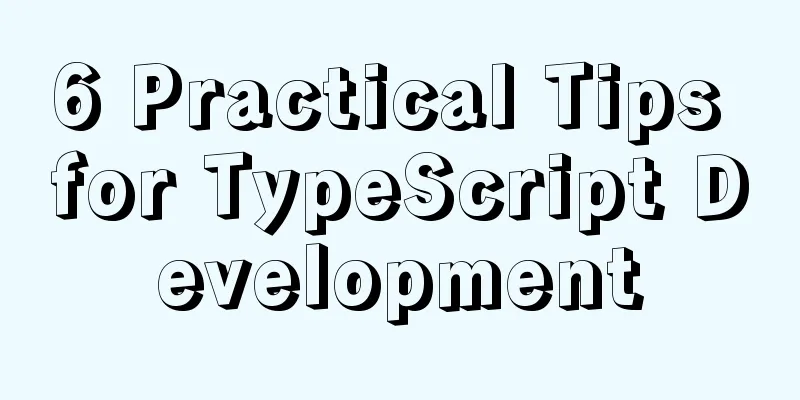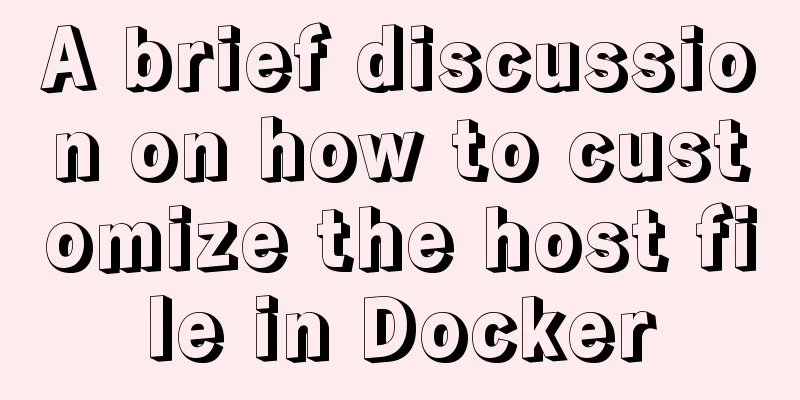6 Practical Tips for TypeScript Development

|
This article summarizes some of my experiences in developing applications using TypeScript. Before I say that, I recommend a VSCODE plugin called quokka.js that allows you to execute TS code immediately. How to use, ctrl+shipt+p, enter the keyword quokka
After pressing Enter, the code will be executed immediately after entering
1. Determine the entity type before developmentBefore formal coding, if there is no interface document, it is best to get the data dictionary and define the entity types in the project according to the data dictionary. For example, if there are user tables and enterprise tables in the data dictionary, we can create a types folder and put the corresponding types into different files. The directory is as follows:
types
user.ts
corp.ts
...
It is recommended to use interface to define entity types, which is more semantic than type.
interface User{
id:string
name:string
}
2. When requesting an interface, you only need to define the fields you need to useWhen defining a type, you only need to define the fields you need to use. Unused fields do not need to be defined. Because the type of data returned by the backend requires the front end to specify the type and then TS makes a judgment. If the front end does not specify the type, TS has no way to judge it. For example, the data returned by the backend is as follows:
user:{
id:1,
name:'xiaoming',
sex:0
}
The defined types are as follows:
interface User{
id:number,
name:string
}
In this case, TS will only check whether there is an id and name in the user, and ignore sex. 3. Use enumeration typesData structures such as gender (male and female), administrator type (super administrator, ordinary user), and member type (ordinary user, VIP, super VIP) are suitable for definition using enumeration types, which can also be used as values. For example:
//Use enumeration type to define member type enum UserType{
Common=0,
VIP=1,
SuperVIP=2
}
class User{
id:string
name:string
type:UserType
}
let userList:User[]=[]
userList.push({
id:'001',
name:'Jack',
type:UserType.SuperVIP //The type defined by the enumeration type can be used as a value})
Enumeration types can also be strings, as shown below. The usage is the same as above.
enum UserType{
Common = 'DiaoSi',
VIP='LowBVIP',
SuperVIP='SuperVIP'
}
4. The type of DOM element should be given normally For DOM elements, don't use any, they have types. let element:HTMLElement=null let video:HTMLVideoElement=null let div:HTMLDivElement=null let canvas:HTMLCanvasElement = null let e:Event =null //Event object e.target Be sure to give DOM element types so you can get code hints
Here is a supplement on how to give the type when uploading a file. Bind the onChange method to the Input element. The method is as follows:
onChange(event: Event): void {
if ((event.target as HTMLInputElement).files && (event.target as HTMLInputElement).files.length) {
const [file] = event.target.files;
}
}
5. How to give the type of the objectThere is a function that receives an object as a parameter. How should the type be given?
First of all, don't give any, don't give any at every turn, it's lower-level, think about what the object contains, a key, a value. The key must be a string type. The value depends on the specific needs. Maybe your value can only be a number or a string, then use number|string. If anything is acceptable, then use any.
//Define the type of the object, the key is usually a string, and the value can be given to the interface ObjType{
[key:string]:any
}
function deepCopy(obj:ObjType){
for(let key in obj){
console.log(obj[key])
}
}
let obj={name:"Jack"}
deepCopy(obj)
6. How to give the type when assigning a value to a structureYou have a function that receives an object and deconstructs the parameters in the object. How do you give the type of the object property obtained by the structure? The code is as follows:
const user={
name:'Jack',
age:10,
friends:[{id:0,name:'Peter',connect:100},{id:1,name:'Alice',connect:69}]
}
interface Friend{
id:number,
name: string,
connect:number
}
function handleFriends({friends}){//How to give the type of friends friends.map(item=>item.connect)
}
Think for 10 seconds. 10 9 8 7 6 5 4 3 2 1 Post the answer:
interface Friend{
id:number,
name: string,
connect:number
}
function handleFriends({friends}:{friends:Friend[]}){
friends.map(item=>item.connect)
}
This is more commonly used in react hooks. SummarizeThis is the end of this article about sharing tips for TypeScript development. For more relevant TypeScript development tips, please search for previous articles on 123WORDPRESS.COM or continue to browse the following related articles. I hope everyone will support 123WORDPRESS.COM in the future! You may also be interested in:
|
<<: Ubuntu 18.0.4 MySQL 8.0.20 installation and configuration method graphic tutorial
>>: How to install Apache service in Linux operating system
Recommend
Design: A willful designer
<br />Years of professional art design educa...
MySQL triggers: creating and using triggers
This article uses examples to describe the creati...
Mysql join query syntax and examples
Connection query: It is the result of connecting ...
WebStorm cannot correctly identify the solution of Vue3 combined API
1 Problem Description Vue3's combined API can...
Web front-end performance optimization
Web front-end optimization best practices: conten...
The actual process of implementing the guessing number game in WeChat applet
Table of contents Function Introduction Rendering...
The difference between method=post/get in Form
Form provides two ways of data transmission - get ...
A simple way to put HTML footer at the bottom of the page
Requirement: Sometimes, when the page content is ...
How to install Nginx in CentOS7 and configure automatic startup
1. Download the installation package from the off...
The whole process record of vue3 recursive component encapsulation
Table of contents Preface 1. Recursive components...
Tutorial on using $attrs and $listeners in Vue
Table of contents introduce Example Summarize int...
Solution to forget password when installing MySQL on Linux/Mac
Preface This article mainly introduces the releva...
Discuss the value of Web standards from four aspects with a mind map
I have roughly listed some values to stimulate ...
Writing tab effects with JS
This article example shares the specific code for...
Detailed explanation of MySQL semi-synchronization
Table of contents Preface MySQL master-slave repl...













